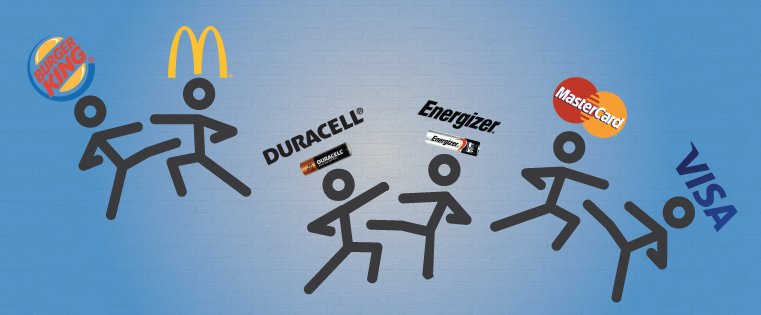 Regardless of whose side you were on during the month-long Time Warner Cable vs. CBS stalemate (if any) over the summer, the most compelling aspect of the dispute came within the first week of negotiations.
Regardless of whose side you were on during the month-long Time Warner Cable vs. CBS stalemate (if any) over the summer, the most compelling aspect of the dispute came within the first week of negotiations.

The impasse between the two behemoths stemmed from CBS doubling its subscriber fee — i.e., the fee TWC pays to CBS for the right to broadcast the CBS signal through its cable boxes — from roughly $1 to $2. (Other points of contention included distribution rights for CBS shows online.)
Fed up with days of unproductive dialogue, TWC’s CEO Glenn Britt actually offered to let its customers pay the subscriber fees directly to CBS — rather than customers paying TWC and TWC paying CBS — with 100 percent of those payments going directly to CBS. In other words, TWC would let cable customers determine the value of CBS programming by letting them decide whether or not it was worth $2, while TWC wouldn’t take a profit for themselves just to prove their point.
Though Britt’s “offer” was nothing more than posturing in the heat of negotiations, it gave cable customers a rare look behind the curtains at the relationship between TV networks and cable companies, and what the numbers in our ever-increasing cable bills truly reflect. And, for some of us, it signaled a potential shift in the way we access our favorite TV content: à la carte cable TV.
“À la carte” is considered a taboo topic for many in the TV industry because moving in that direction would mean a substantial amount of lost revenue depending on where you’re standing. It’s surprising Britt would even bring it up, considering how delicate the cable ecosystem already is.
But for customers, an à la carte cable subscription has been a pipedream for a long time. As their monthly cable bills continue to grow, cable customers complain that they pay for hundreds of channels when they only watch a handful. And they’re right: a cable customer who has no interest in sports is still paying for ESPN. The self-proclaimed Worldwide Leader in Sports commands by far the highest subscriber fee of any broadcast or cable network: $5.54 per subscriber. That fee is then passed from the cable company onto the customers — whether they watch a minute of ESPN or not.
Where an à-la-carte cable system would hit hardest is among the cable networks with relatively small audiences. A popular cable network like MTV only commands about 40 cents per subscriber per month according to SNL Kagan, while niche networks such as the newly launched Esquire Network (formerly Style Network) could be asking for even less. These networks draw a very small portion of the total cable audience — and that’s when they’re being included in a bundle of available cable channels. One can only imagine what would happen to their audience numbers (and their ad revenues) if cable customers only received those channels if they paid for them individually, with varying prices for each. For customers, it would be like going from prix fixe to dim sum.
On the other side of the coin, TWC, Comcast or Cablevision might not be able to get $60 to $80 a month for a cable subscription (as they do now) if customers will only receive, say, 20 channels they hand-selected instead of a suite of 180+ channels — most of which they may never view. (According to Nielsen, customers only view approximately 10 percent of their channels every week.) Some have suggested that the cable companies would simply charge more per subscriber, per network. For example, only the people who subscribe to ESPN would have to pay for it, but they would pay $30 a month for it rather than $5.54 to make up for those non-viewers who are no longer chipping in.
With all the new TV content platforms available online, many of us struggle to justify keeping cable at all. For $96 per year ($8 per month), Netflix offers a substantial library of TV and movie titles available for streaming, not to mention its own original programming. For $100 you can pick up a Roku or Apple TV to stream Netflix content on your TV screen, so there’s not much loss on quality or experience. If you absolutely have to watch the Starks and the Lannisters butt heads on “Game of Thrones” but don’t want to pay $20 a month on cable for HBO, you can buy the latest season for $34 (or $3.50 per episode), with the latest episode available the next day. The same goes for fans of AMC’s “Breaking Bad” — episodes are available the next day for $1.99, or fans could have signed up for the full final season (8 episodes) for $15.
In other words, à la carte already exists: all the TV content is out there if you’re willing to find it … and pay for it.
All except for sports.
Once football season begins, hardcore fans and fantasy football players alike need to be able to see local and national games on broadcast channels — not to mention all-access pro football packages such as NFL RedZone. Of course, you could buy a tuner or antennae for about $100 to capture the games on CBS, FOX and NBC, but that won’t help you watch Monday Night Football on ESPN.
Football is one thing, but you’re completely out of luck if you’re a baseball fan who wants to quit cable. The official online Major League Baseball package, MLB.TV, does not allow fans to view games for local teams. For example, a Yankees fan can’t use the service to watch Yankees games unless they live outside of the New York DMA because it violates the agreement they have with the cable companies that force fans to watch games on the YES Network on cable. The Yankees play a handful of games on broadcast TV plus some national games on FOX, but that’s hardly enough access for a true fan.
But if you’re a big sports fan who’s sick of cable bills, you still have a choice. You may not consider it “à la carte,” but if you believe that your consumption of sports programming on TV is worth what you pay each month for your total cable bill, then you’ll choose to pay it; if you don’t, you won’t.
Ultimately, what you’re paying for cable is as much about convenience as it is about content. For those who don’t care about having everything all on one set-top box, dropping cable makes most sense. For the rest of us who aren’t interested in assembling a week’s worth of programming for ourselves, we’ll continue to order off the cable company’s prix fixe menu — we just can’t complain that we don’t have a choice.









